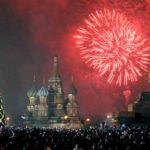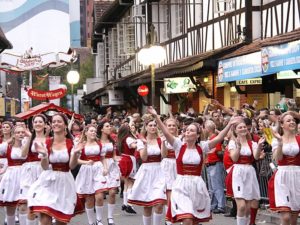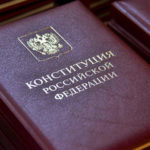Interesting facts about the New Year
 The celebration of the New Year is taking place in many countries in a big way, but in Russia it generally represents something special. For millions of people, this holiday is paramount in the year, and many begin to prepare for it even in the summer. Someone spends New Year’s Eve with family, someone prefers noisy parties, but it is on New Year’s that most people feel the warmth and love for their relatives and friends.
The celebration of the New Year is taking place in many countries in a big way, but in Russia it generally represents something special. For millions of people, this holiday is paramount in the year, and many begin to prepare for it even in the summer. Someone spends New Year’s Eve with family, someone prefers noisy parties, but it is on New Year’s that most people feel the warmth and love for their relatives and friends.
For the first time, celebrating the New Year was scheduled for January 1 by order of the famous Caesar, more than 2,000 years ago.
On the Julian and Gregorian calendars, the New Year holidays coincide.
In China, the New Year is celebrated on one of the days from January 21 to February 21. Chinese mark it, by the way, also in a big way.
The tradition of decorating a Christmas tree with garlands begins in 1895, when a spruce tree installed in the USA in front of a white house was decorated in this way.
In Vietnam, the New Year is called “Tet”.
In Russia, the New Year holidays were scheduled for January 1 by decree of Peter I. Prior to this, the New Year was celebrated on September 1.
Before the revolution, Russia was celebrated mainly on Christmas, but from 1918 to 1935 it was banned. By Stalin’s decree, Christmas was replaced for the New Year.
In Thailand, the New Year is celebrated from April 13 to 15, and is called Songkran. On this day, all people pour water on each other and shower with colored talcum powder.
In Iran, the New Year holidays fall on March 21 or 22.
But in Bangladesh, the New Year is celebrated on April 14, and it often coincides with the Thai one.
Old New Year is celebrated not only in Russia, but also in many other countries, especially in the states of the former USSR.
The first of January is a day off in Russia since 1949.
Until 1752, the New Year in Great Britain was officially celebrated on March 25th.
In Italy, especially in the provinces, there is still a tradition to throw old things out of the window on New Year’s Eve. So at this time it is worth going around the streets very carefully, as sometimes even furniture is thrown out of the windows.
In Thailand, most people celebrate their New Year in April, and European on January 1, and Chinese in February.
In Nepal, the New Year holidays are celebrated on April 17-18, and in Ethiopia – September 11th.
In Tibet, there is a tradition to bake pies for the New Year and distribute them to all passersby. It is believed that the more cakes will be able to distribute, the more happiness and good luck will be in the coming year.
The first Christmas card in the world was printed in 1843 in London.
The Christmas tradition of hiding gifts under the Christmas tree appeared in Russia several centuries ago.
The custom to give gifts for the New Year appeared in ancient Rome. Just by the way, like the saying that how to celebrate the new year, you will spend it.
In medieval Europe, the New Year tree was often fastened to the ceiling, and upside down. Just for fun.
Christmas-tree toys appeared in Russia because of the year of the harvest on apples. Before this, a festive tree was decorated with sweets and apples. When there were no apples, they were replaced with toys.
The film “The Irony of Fate, or Enjoy Your Bath” has been shown on New Year’s TV on Russian television for about 40 years in a row.
In Micronesia, every New Year, people come up with new family names for themselves, which are not recorded in the passport, and inform them of their relatives and friends. This is done to confuse evil spirits.
The biggest Christmas tree in the world before the holidays is decorated in Rio de Janeiro, the capital of Brazil. Its height reaches 76 meters, which is comparable to the height of a 20-story building. True, it is still Christmas, not New Year.



























